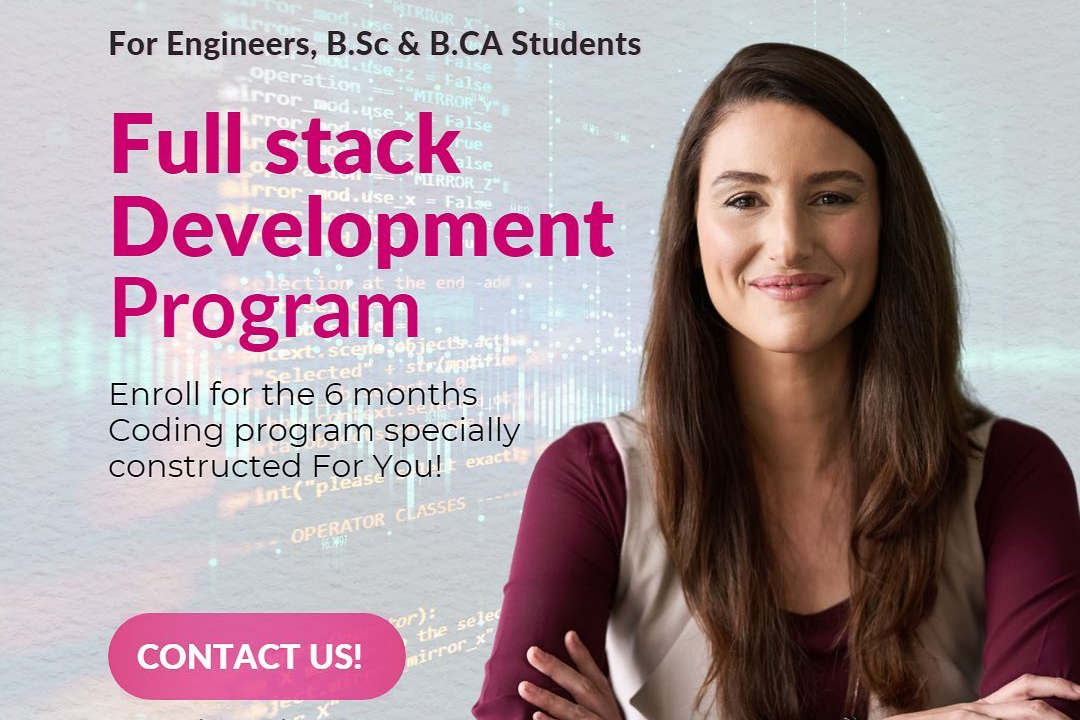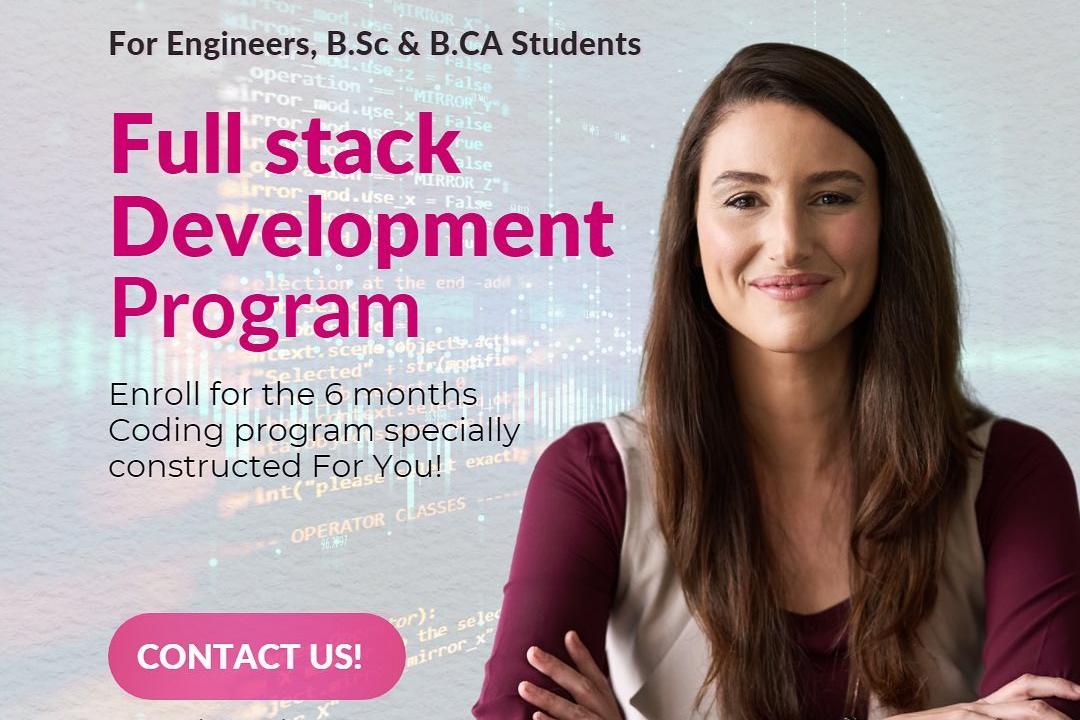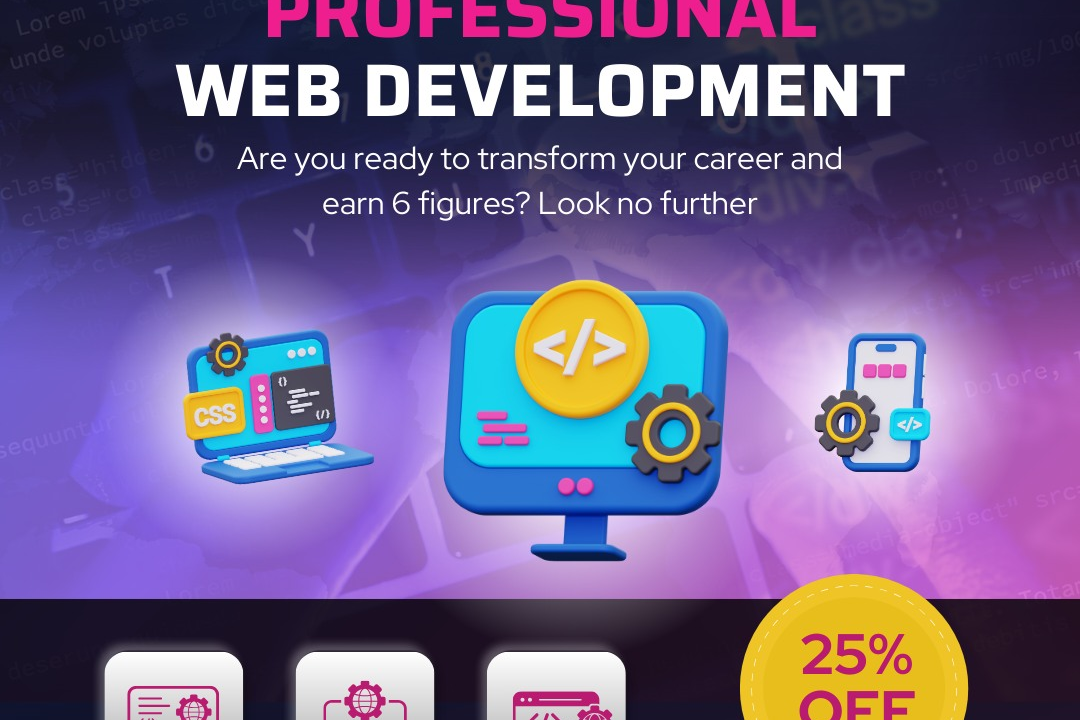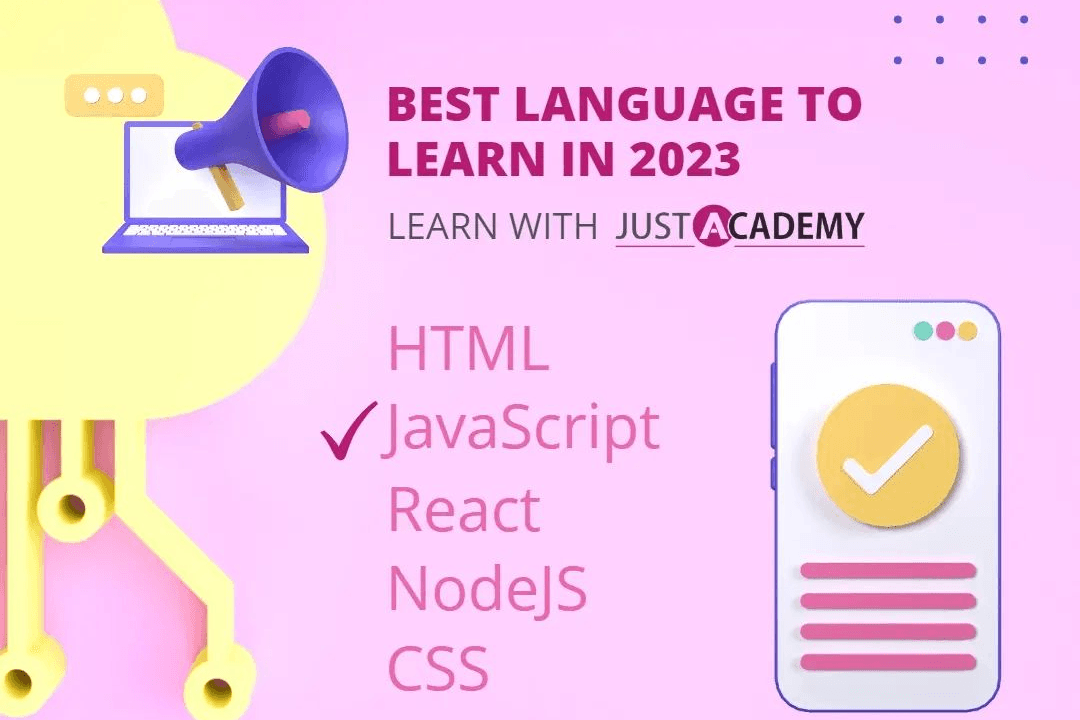laravel interview questions Medium
Essential Medium-level Laravel Interview Questions
laravel interview questions Medium
Laravel interview questions, especially in the medium difficulty range, are essential for candidates looking to demonstrate their proficiency in this popular PHP framework. They cover a range of topics including routing, middleware, Eloquent ORM, and security features, offering a comprehensive assessment of a developer's understanding and practical application of Laravel. Preparing for these questions not only helps candidates build confidence but also equips them with the knowledge to excel in real-world projects. By familiarizing themselves with these concepts, developers can showcase their capabilities effectively to potential employers, making it an invaluable part of their interview preparation strategy.
To Download Our Brochure: https://www.justacademy.co/download-brochure-for-free
Message us for more information: +91 9987184296
1 - What are Service Providers in Laravel?
Service Providers are the central place for configuring and bootstrapping application services in Laravel. They are responsible for binding classes into the service container and are typically stored in the `app/Providers` directory. Each service provider has two main methods: `register()` and `boot()`.
2) Explain Middleware in Laravel.
Middleware in Laravel provides a convenient mechanism for filtering HTTP requests entering the application. It allows you to add logic before or after a request is processed, such as authentication checks, logging, or input modification. Middleware can be applied globally or assigned to specific routes.
3) What is Eloquent ORM in Laravel?
Eloquent ORM is Laravel’s built in object relational mapping system, allowing developers to interact with database tables as if they were PHP objects. It provides an expressive syntax for querying databases, and relationships can be defined between models, making data manipulation seamless.
4) Describe the purpose of the `.env` file in Laravel.
The `.env` file in Laravel stores environment variables for the application. It allows developers to configure application settings such as database connections, mail server credentials, and cached configurations without hardcoding them, enabling easy changes between different environments like local, staging, and production.
5) How does routing work in Laravel?
Routing in Laravel is handled through the `routes/web.php` and `routes/api.php` files. You define routes using methods such as `get()`, `post()`, or `resource()`, which map URLs to controller actions. Laravel also supports route parameters and middleware for handling requests efficiently.
6) What are Laravel facades?
Facades provide a static interface to classes that are available in the service container. They act as proxies to the underlying service, making it easy to access and utilize services throughout the application without needing to instantiate them. They simplify code while maintaining performance.
7) Explain the concept of CSRF protection in Laravel.
Cross Site Request Forgery (CSRF) protection is built into Laravel to prevent unauthorized commands being transmitted from a user that the web application trusts. Laravel automatically generates a CSRF token for each active user session, which must be included in forms, ensuring that requests originated from the application itself.
8) What is the purpose of the `artisan` command in Laravel?
Artisan is the command line interface included with Laravel, providing useful commands for application development. It allows developers to create controllers, models, and migrations easily. Developers can also use Artisan to run database migrations, seed data, and clear cached files among other tasks.
9) What are migrations in Laravel?
Migrations are version control for your database, allowing you to define the structure of your database in PHP code. Migrations make it easy to create and modify database tables, facilitating collaboration in teams as changes can be shared through migration files and executed consistently in different environments.
10) How can you handle file storage in Laravel?
Laravel provides a robust file storage system through the `Storage` facade. You can easily store, retrieve, and delete files in various filesystems such as local, Amazon S3, or Rackspace. Additionally, Laravel supports file uploads and offers methods to manage file paths and check for existence.
11 - What are ‘Observers’ in Laravel?
Observers allow you to group event listeners for a model, making it easy to listen for various Eloquent model events such as creating, updating, and deleting. By defining an observer class and registering it with your model, you can cleanly organize code related to model events.
12) Explain form request validation in Laravel.
Form request validation is a feature in Laravel that allows you to encapsulate validation logic within a dedicated request class. By creating a form request, you can define validation rules in a single location and authorize access before your controller action, simplifying the validation workflow.
13) What role do seeders play in Laravel?
Seeders in Laravel allow you to populate your database with initial data or test data. By using the `database/seeds` directory, you can create seeder classes that define how data should be inserted into tables, enabling quick setup and testing of the application with consistent data.
14) How do you handle exceptions in Laravel?
Exception handling in Laravel is managed by the `app/Exceptions/Handler.php` file. You can define how to process different types of exceptions, log errors, and provide custom responses. Laravel’s built in exception handler automatically handles common exceptions for you, making it easier to manage application errors.
15) What is the role of the ‘config’ folder in Laravel?
The `config` folder in Laravel contains configuration files for various aspects of the application, such as database connections, caching, and mail services. Each file returns an array of settings, allowing developers to customize application behavior easily and centralize configuration management.
16) What is the difference between ‘soft deletes’ and ‘hard deletes’ in Laravel?
Soft deletes in Laravel allow you to retain records in the database while marking them as deleted. This is done by adding a `deleted_at` timestamp column to the model. In contrast, hard deletes permanently remove records from the database. Soft deletes facilitate recovery of deleted items when necessary.
17) Explain the purpose of the `routes/api.php` file.
The `routes/api.php` file is used to define routes that respond to API requests in Laravel applications. Routes defined in this file are automatically assigned the `api` middleware group, which applies settings like stateless behavior. This organization helps in separating API routes from web routes.
18) What is Laravel Mix?
Laravel Mix is a wrapper around the popular Webpack build tool, providing an elegant API for defining Webpack build steps for your Laravel application. It compiles and minifies CSS, JavaScript, and other assets, simplifying asset management while improving build performance and organization.
19) How do you implement localization in Laravel?
Localization in Laravel allows you to support multiple languages in your application. You can define language files that contain key value pairs for translations in the `resources/lang` directory. By retrieving these translations using the `trans()` function or the `__()` helper, you make your application accessible to a wider audience.
20) What are events and listeners in Laravel?
Events and listeners provide a method for decoupling various parts of your application. Events are used to signal that something has occurred, and listeners are classes that handle these events. This pattern enhances the responsiveness of applications and improves testability by isolating functionality.
21 - How does the service container work in Laravel?
The service container is a powerful tool for dependency injection in Laravel. It manages object creation and dependency resolution automatically, allowing you to easily inject classes and interfaces into constructors or methods. The container simplifies managing application dependencies, reducing boilerplate code.
22) What are ‘Accessors’ and ‘Mutators’ in Laravel models?
Accessors and mutators in Laravel are methods that allow you to format and manipulate model attributes. Accessors transform attributes when they are retrieved from the database, while mutators modify attributes before they are saved. This capability helps in maintaining data consistency and formats within the model.
23) Explain how to validate files in Laravel.
Laravel offers powerful validation capabilities for file uploads through the `Illuminate\Http\Request` class. You can specify rules for file type, size, and other attributes in your validation logic. By utilizing validation rules such as `file`, `mimes`, or `max`, you ensure that uploaded files meet the specified criteria.
24) How does caching work in Laravel?
Caching in Laravel can significantly enhance application performance by storing frequently accessed data and reducing load times. Laravel supports various caching backends, including Redis and Memcached. You can use Cache facade to store, retrieve, or forget cache entries and manage cache expiration easily.
25) What is the purpose of the `commands` directory in Laravel?
The `commands` directory is where you can define custom Artisan commands. By creating your own commands, you can automate repetitive tasks, such as database migrations, data imports, or maintenance operations. Custom commands enhance the utility of the Artisan CLI and streamline development processes.
26) Is it possible to create RESTful APIs in Laravel? If so, how?
Yes, Laravel provides support for building RESTful APIs through its routing and controller capabilities. You can define resource routes that automatically generate routes for standard actions index, store, show, update, and destroy. Additionally, Laravel's resource controllers streamline the development of API endpoints.
27) What are ‘Policy’ classes in Laravel?
Policy classes in Laravel provide a way to authorize user actions on resources. You define policies that contain methods for various actions, and then you can use the `authorize()` method to determine if a user has permission to perform a given action. This enhances security and access control within applications.
28) Explain the concept of job queues in Laravel.
Job queues in Laravel allow you to defer the execution of time consuming tasks to a later time, improving application responsiveness. Jobs can be dispatched to various queue drivers, such as database, Redis, or Amazon SQS. By utilizing queues, applications can manage workloads efficiently and process tasks asynchronously.
29) What is a ‘View Composer’ in Laravel?
View Composers are callbacks or class methods that are called when a specific view is rendered. They allow you to bind data to your views before they're displayed, contributing to organized code and separation of logic. This is particularly useful in sharing data between multiple views.
30) How can you protect routes using authentication middleware in Laravel?
To protect routes in Laravel, you can use the `auth` middleware, which restricts access to only authenticated users. Simply apply this middleware to routes or route groups. When a user attempts to access a protected route without authentication, they will be redirected to the login page.
31 - What is Laravel Passport?
Laravel Passport is a package that provides a full OAuth2 server implementation for your Laravel application. It simplifies API authentication using access tokens, allowing for secure user authentication without the need for session management. Passport handles various OAuth2 flows and facilitates token issuance and management.
32) How does PHPUnit integration in Laravel work?
PHPUnit is integrated directly into Laravel for testing purposes. Developers can write unit and feature tests in the `tests` directory, leveraging Laravel's built in testing capabilities. The framework provides a testing suite that allows developers to simulate HTTP requests and interact with application components, enhancing test coverage and reliability.
33) What is the role of configuration caching in Laravel?
Configuration caching in Laravel allows you to optimize application performance by merging all configuration files into a single file, reducing filesystem overhead during requests. By running the `php artisan config:cache` command, you can ensure faster loading times, making it especially useful in production environments.
34) Discuss the use of ‘Link generation’ in Laravel.
Link generation in Laravel facilitates the creation of URLs for routes using helper functions like `route()` and `url()`. This approach makes your application more maintainable as it reduces hardcoded URLs, ensuring that your application can correctly handle route changes without manually updating all links.
35) What is the purpose of the `database` directory in Laravel?
The `database` directory in Laravel contains all the files related to database access, including migrations, factories, and seeders. This structured organization allows developers to manage database schema changes, create test data, and perform data seeding efficiently, making database management more straightforward.
Course Overview
The ‘Laravel Interview Questions Medium’ course is designed to enhance your understanding of Laravel by covering a range of essential topics through a curated set of medium-level interview questions. Participants will dive into important concepts such as routing, middleware, dependency injection, Eloquent ORM, and testing practices within Laravel. This course not only prepares you for technical interviews but also strengthens your grasp of real-world applications and best practices, fostering both confidence and competence in your Laravel development skills. By engaging with practical examples and detailed explanations, you will be well-equipped to tackle intermediate-level questions in any Laravel-focused job interview scenario.
Course Description
The “Laravel Interview Questions Medium” course is meticulously crafted for aspiring developers seeking to elevate their Laravel expertise and boost their confidence ahead of technical interviews. This course features a comprehensive collection of medium-level interview questions that cover key topics such as routing, middleware, dependency injection, Eloquent ORM, and testing methodologies. Through engaging discussions, real-world scenarios, and practical examples, participants will not only learn how to effectively answer these questions but also deepen their understanding of Laravel's functionalities and best practices. By the end of this course, learners will be well-prepared to showcase their skills and knowledge in any Laravel development interview, setting a solid foundation for their career advancement in web development.
Key Features
1 - Comprehensive Tool Coverage: Provides hands-on training with a range of industry-standard testing tools, including Selenium, JIRA, LoadRunner, and TestRail.
2) Practical Exercises: Features real-world exercises and case studies to apply tools in various testing scenarios.
3) Interactive Learning: Includes interactive sessions with industry experts for personalized feedback and guidance.
4) Detailed Tutorials: Offers extensive tutorials and documentation on tool functionalities and best practices.
5) Advanced Techniques: Covers both fundamental and advanced techniques for using testing tools effectively.
6) Data Visualization: Integrates tools for visualizing test metrics and results, enhancing data interpretation and decision-making.
7) Tool Integration: Teaches how to integrate testing tools into the software development lifecycle for streamlined workflows.
8) Project-Based Learning: Focuses on project-based learning to build practical skills and create a portfolio of completed tasks.
9) Career Support: Provides resources and support for applying learned skills to real-world job scenarios, including resume building and interview preparation.
10) Up-to-Date Content: Ensures that course materials reflect the latest industry standards and tool updates.
Benefits of taking our course
Functional Tools
1 - Laravel Framework
The Laravel framework itself is a primary tool used throughout the training program. It provides a robust and elegant syntax for building web applications. This PHP framework simplifies tasks such as routing, authentication, and caching, allowing developers to create high quality applications efficiently. In this course, students will dive deep into Laravel, learning not just the basics but also advanced features like service providers and middleware.
2) Composer
Composer is an essential dependency management tool that Laravel relies on. In our training program, students will learn how to use Composer to manage libraries and packages, ensuring that their applications are up to date with the latest code. Understanding Composer is crucial for Laravel development, as it streamlines the process of installing and updating third party libraries, thus improving productivity and project maintenance.
3) PHP Unit
The course introduces PHP Unit, a powerful testing framework widely used in Laravel applications. Students will gain hands on experience writing unit tests to ensure their code behaves as expected. This tool emphasizes the importance of test driven development (TDD) and provides students with a strong foundation in building robust applications. Testing is a crucial aspect of modern software development, and mastering PHP Unit equips students with the skills to deliver high quality code.
4) Laravel Tinker
Laravel Tinker is an interactive REPL (Read Eval Print Loop) that allows students to experiment with Laravel’s features and build applications in a user friendly environment. Tinker enables developers to run PHP code directly within the Laravel framework, simplifying debugging and development processes. The course will highlighthow to utilize Tinker to test queries, manipulate data, and perform rapid prototyping of various features.
5) MySQL or PostgreSQL Database
Understanding databases is vital for any web application, and this course covers the use of MySQL or PostgreSQL as the primary database systems. Students will learn how to configure database connections, rations, and perform CRUD operations. The training will emphasize database design principles and optimization techniques, ensuring learners can manage data effectively and create scalable applications that can handle large datasets.
6) Version Control with Git
Git is an essential tool for version control that will be integrated into the training program. Learning Git allows students to track changes in their code, collaborate with others, and maintain project history effectively. The course will focus on the fundamentals of Git, including branching, merging, and resolving conflicts, enabling students to work smoothly in team environments. Mastering Git is crucial for developers as it provides a safety net when making changes, enhancing their ability to manage projects efficiently.
7) RESTful API Development
In the course, students will learn how to build RESTful APIs using Laravel. This includes understanding the principles of REST architecture, creating API routes, and managing JSON responses. By the end of the program, participants will have the skills to design and implement effective APIs that can be consumed by front end applications, enhancing their ability to build full stack solutions.
8) Authentication and Authorization
Security is a critical aspect of web development, and our course covers Laravel's built in authentication and authorization features. Students will learn how to implement user registration, login, and password reset functionalities. Additionally, they will explore roles and permissions, aiding them in designing secure applications that protect sensitive data and restrict access based on user roles.
9) Eloquent ORM
Laravel's Eloquent ORM (Object Relational Mapping) simplifies database interactions. In this training program, students will analyze how to use Eloquent to perform complex queries with simple syntax. They will learn about relationships between models, eager and lazy loading, and data manipulation techniques, empowering them to build efficient database driven applications.
10) Blade Templating Engine
The course introduces Blade, Laravel's powerful templating engine that allows for the creation of dynamic web interfaces. Students will learn how to utilize Blade to create reusable templates, incorporate conditional statements, and loop through data for rendering views. This skill enables developers to enhance the user experience by creating visually appealing and responsive applications.
11 - Middleware
Understanding middleware is essential for managing HTTP requests in Laravel applications. The course will guide students on how to build and use middleware to filter requests, manage sessions, and implement features such as CORS (Cross Origin Resource Sharing). This knowledge will help them enhance application functionality and improve security measures.
12) File Storage and Uploads
Managing file uploads and storage is a critical skill for many web applications. This course will teach students how to handle file uploads in Laravel, as well as leveraging Laravel's filesystem abstraction for storing files on local and cloud storage. They will learn best practices for managing file permissions, validating uploads, and ensuring secure file handling.
13) Task Scheduling with Laravel Scheduler
Laravel includes a powerful task scheduling feature that allows developers to automate repetitive tasks. The course will introduce students to the Laravel Scheduler, demonstrating how to create and manage scheduled tasks using an elegant syntax. This skill is particularly valuable for maintaining and managing background processes, improving application efficiency.
14) Deployment and Environment Configuration
Deploying a Laravel application and managing different environments is crucial for real world application development. In this part of the course, students will learn the steps to deploy their applications using shared hosting, VPS, or cloud services. They will also explore configuring environment variables and understanding the best practices for maintaining application health post deployment.
15) Real Time Applications with Laravel Echo
The course will cover how to develop real time applications using Laravel Echo, which enables developers to work with WebSockets effortlessly. Students will learn to integrate real time functionalities such as notifications and live updates, enhancing user engagement and interactivity in their applications.
16) Testing and Debugging
In addition to using PHP Unit, the course addresses best practices for testing and debugging Laravel applications. Students will explore various testing strategies, including feature tests, use cases, and end to end tests, ensuring they understand how to identify and fix issues proactively before deployment.
17) Laravel Packages and Ecosystem
Laravel boasts a rich ecosystem of packages that extend its capabilities. Throughout the course, students will learn how to find, install, and use various Laravel packages, such as Spatie for role management and Dusk for browser testing. Familiarity with the ecosystem increases productivity and allows developers to leverage community built tools effectively.
18) Continuous Integration and Deployment (CI/CD)
Modern development practices increasingly incorporate CI/CD workflows. In the course, students will learn how to set up continuous integration and deployment pipelines, using tools like GitHub Actions or Jenkins, to automate the process of testing and deploying their Laravel applications. This knowledge is crucial for maintaining code quality and facilitating smooth updates.
These points ensure a comprehensive understanding of Laravel and its ecosystem, equipping students with the practical skills necessary to succeed in the field of web application development.
Browse our course links : https://www.justacademy.co/all-courses
To Join our FREE DEMO Session: Click Here
This information is sourced from JustAcademy
Contact Info:
Roshan Chaturvedi
Message us on Whatsapp: +91 9987184296
Email id: info@justacademy.co
Angular Scenario Based Interview Questions
node js Interview Questions for Fresher












